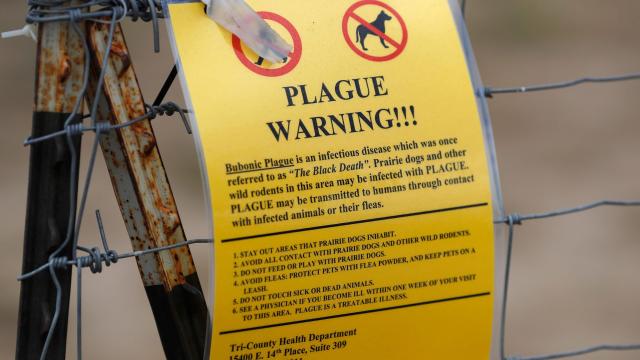The risk of the plague spilling over from humans to animals in the western U.S. has increased since 1950 thanks to climate change, a new study has found. Importantly, the research gives valuable insights into how this deadly disease has historically moved and developed in the U.S., which can help us understand more about its future.
“We want to understand where plague (yes, ‘The Plague,’ which is still a common wildlife disease) can exist in the United States, how where it can exist has changed over the last century, and why plague can exist in those places it does, and not say 32 km further down the road,” study coauthor Boris Schmid said in an email.
Yersinia pestis is the bacteria that causes plague — including that plague, the medieval Black Death, which killed around 25 million people over the course of four years in the 1300s. The bacteria is spread to humans from animals, most infamously rats, which carry plague-infested fleas on them. Scientists have theorised that the plague, like many other infectious diseases, will probably increase its spread to humans as the planet warms and people come into increasingly closer contact with wild animals.
But there’s not a lot of research out there on what historically are the best conditions for the plague to develop and get out of control. As a result, there are still a lot of big questions about the plague — like why it hasn’t spread to certain geographic areas, or why human cases don’t always overlap with where animals are carrying the disease — that remain unanswered.
A lot of the current modelling about how infectious disease might spread with climate change is based on what’s known as species distribution models, or projections of how wildlife habitats could grow and change. This type of modelling oversimplifies disease outbreaks by overlooking a lot of important details about how plague bacteria interact with the environment, including things like soil type and elevation, that can help tell better stories about how it spreads from animals to humans, and why outbreaks may happen in some places and not others.
“Weirdly, most of what we know about climate and disease comes from extrapolating the future based on the present, but we don’t know very much about the recent past,” study coauthor Colin Carlson said over Twitter DM.
The study authors set about to get a better handle on these details. Using a host of historical data, including animal serology tests, human plague case records, climate records, and soil datasets, researchers built a model to examine the relationships between these datapoints that could more accurately pinpoint the conditions that encourage the development of the disease and how they change over time. Their results were published Friday in Global Change Biology.
The study found that rodent communities in certain areas at higher elevations were up to 40% more likely to harbour the disease, which the researchers say is attributable to warming since 1950. That, in turn, means that the risk of the plague spreading from rodents to humans also increased, albeit more slightly.
“It’s a big, messy, tangled system, and there’s a lot of different levers controlling the ecology of the disease,” Carlson said. “But as we start to identify the big ones, we can look at how the key variables have changed since 1950, and it turns out — more and more of this region is starting to match the conditions that allow plague to hang out in animals, and increasingly, to make the jump into people.”
Just because there’s a growing probability that plague can develop thanks to climate change doesn’t mean you need to start worrying about the second coming of the Black Death. Nowadays, it’s pretty treatable with modern antibiotics — but still not exactly something you want to risk lots of people catching.
“Plague is probably pretty low on the things to worry about, compared to risks of forest fires etc, when the western US is heating up,” Schmid said. “If you sleep in a place where you don’t get bitten by fleas, then you have taken away the main route by which the disease used to spread to humans.”
But the research does have important ramifications for other types of diseases — and an ominous look into our future. One crucial point: the study illustrates how just counting human cases of plague underestimates the amount of the disease incubating in wild areas in the western U.S.
“I think we’re probably underestimating just how much climate change could affect human and animal health,” Carlson said. “There’s this conventional wisdom that the biggest impacts are going to be from heat and disasters, and I just don’t think that’s a sure thing – I think it’s just harder to reconstruct the climate signal for infectious diseases, because they’re a bit more complicated biologically. But the pandemic is telling us just how much those diseases matter for the world – even rare spillover events can have big consequences.”
